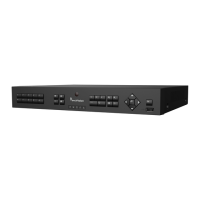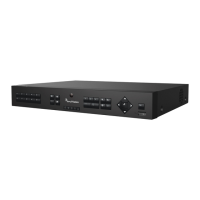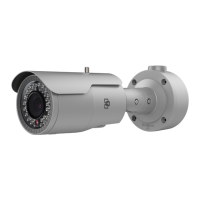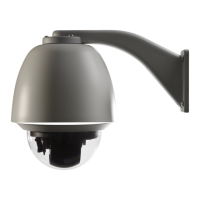




Do you have a question about the Interlogix TruVision and is the answer not in the manual?
| Audio Input | RCA |
|---|---|
| Audio Output | RCA |
| Operating System | Embedded Linux |
| Network Connectivity | Ethernet |
| Remote Viewing | Yes |
| Motion Detection | Yes |
| Power Supply | 12 VDC |
| Video Output | HDMI, VGA |
| Compression | H.264 |
| Operating Temperature | -10°C to 55°C |
| Video Input Channels | 4, 8, 16 |
Alerts to conditions or practices that can cause unwanted results.
Steps to turn on, turn off, and reboot the DVR unit.
Guides through the initial setup process for basic recorder configuration.
Overview of different methods to control the recorder (panel, mouse, remote).
Instructions on how to use a USB mouse to navigate and operate the recorder's interface.
Explains how to use the infrared remote control for operating the recorder's functions.
Performing instant replay of a predefined period for reviewing recent events.
Accessing one day's video recordings for a selected camera.
Searching and playing back recorded videos by time, events, bookmarks, and snapshots.
Locating and reviewing recorded video segments containing motion detection.
Searching video based on time, date, and recording type (continuous, motion, alarm).
Finding recordings based on event types like motion, text insertion, or alarms.
Methods for archiving recorded files onto external storage devices.
Adjusting settings for local monitor output, including layout and time bar.
Configuring analog cameras and their status, including enabling/disabling.
Adding, editing, removing, and updating firmware for IP cameras.
Configuring recording parameters like stream mode, resolution, and frame rate.
Enabling motion detection, setting sensitivity, and defining motion grids.
Setting up protocol and address for analog PTZ dome cameras.
Configuring and modifying predefined camera positions and movement sequences.
Configuring general network settings like IP address, subnet mask, and gateway.
Setting up Dynamic DNS to connect to the recorder using a fixed address.
Configuring the recorder to send email notifications for alarms or events.
Defining when the recorder records video and which settings are used for each camera.
Setting up a daily recording schedule using the visual schedule window.
Configuring daily recording schedules via the Edit menu for more detailed control.
Manually recording video during live view, with priority given to alarms or scheduled recordings.
Configuring the recorder to record when triggered by an external alarm device.
Connecting the recorder to an alarm system, like a siren, and scheduling its activation.
Specifying how the recorder notifies about alarms or events (e.g., full-screen, audio, email).
Setting up detection for video loss and triggering a system notification.
Sending signals to a remote host when an alarm is triggered, requiring server software.
Setting up the system date, time, and daylight saving time.
Configuring general recorder options like language, device name, and menu timeout.
Resetting the recorder to its factory default settings.
Updating the recorder's firmware via USB, web browser, or Navigator software.
Checking the status of installed HDDs, including Normal, Abnormal, or Uninitialized.
Initializing or re-initializing an HDD before use, which erases all data.
Creating new user accounts with specific access levels and permissions.
Allocating specific access privileges (local, remote, camera) for user accounts.
System administrator procedure for removing existing user accounts.
Changing a user's name, password, access level, or MAC address.
Procedure for changing the administrator's password for system security.
Accessing device, camera, record, and network information.
Viewing and exporting system logs, which record events like operations, alarms, and notifications.
Steps to access the recorder via a web browser, including login credentials.
Viewing, recording, and playing back videos using the web browser interface.
Using the web browser interface to control PTZ dome camera functions.
Searching and playing back recorded video through the browser's playback page.
Configuring recorder settings locally or remotely through the browser interface.
Defining camera communication and network parameters via the browser.
Overview of browser menu functions for remote configuration.
Default network configuration parameters like IP address, subnet mask, and DNS.
Default alarm and event setup parameters, including inputs, outputs, and notifications.
Default device management settings, including time/date and general configuration.











